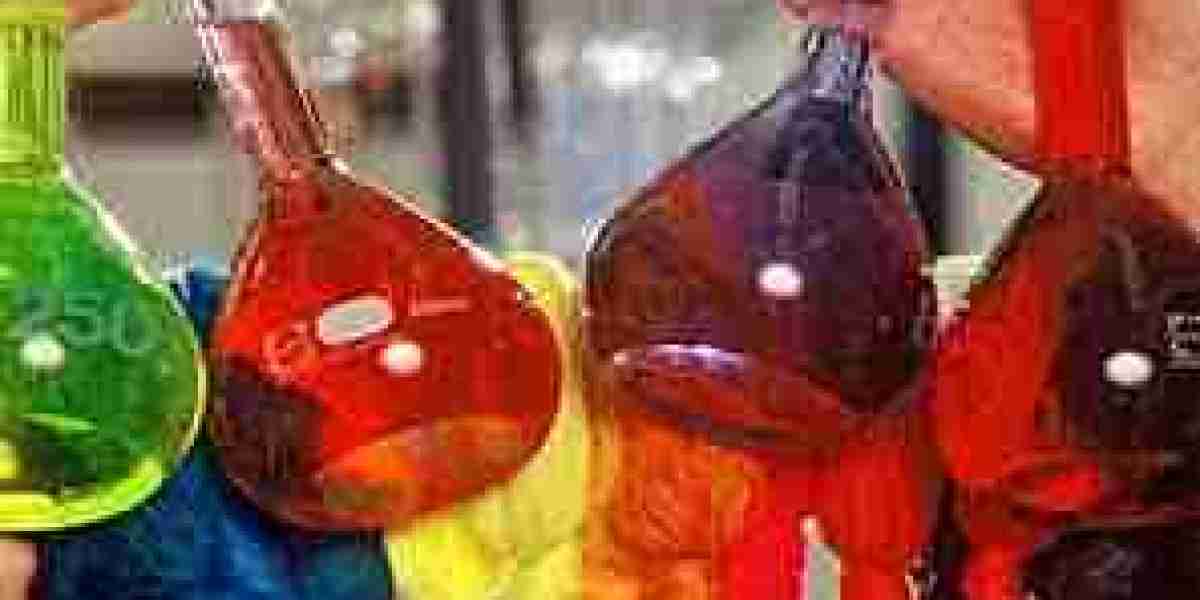The global Textile Chemicals Market is in a pivotal phase of transformation, driven by increasing environmental consciousness, regulatory reform, and a distinct shift in consumer expectations. As the textile industry evolves to meet these changes, chemical manufacturers are adapting rapidly, focusing on sustainable innovation, ethical sourcing, and functional performance. The rising demand for eco-friendly textile chemicals reflects broader global efforts toward greener manufacturing and more transparent value chains.
Market Overview
The textile chemicals market, valued at over USD 26 billion in 2024, is projected to grow at a compound annual growth rate (CAGR) of 4–5% through 2030. This growth is underpinned by rising global textile production, particularly in Asia-Pacific, and the expanding demand for functional, technical, and performance-enhanced textiles. However, it is the shift toward environmentally responsible practices and evolving consumer values that are redefining the market landscape.
Textile chemicals encompass a wide range of products—colorants, sizing agents, surfactants, finishing agents, and softeners—used throughout the manufacturing process. Traditionally, many of these chemicals posed environmental and health hazards due to toxicity, water usage, and waste generation. Today, sustainability is emerging as both a challenge and a core driver of growth and innovation.
Key Drivers of Eco-Friendly Chemicals
1. Stricter Environmental Regulations
One of the most influential drivers is the tightening global regulatory framework governing chemical use and wastewater management in textile manufacturing. Regions like the European Union, the United States, and even developing countries such as India and China are enforcing stricter controls on hazardous substances.
Key regulations and initiatives include:
REACH (Registration, Evaluation, Authorisation and Restriction of Chemicals) – European regulation for chemical safety.
ZDHC (Zero Discharge of Hazardous Chemicals) – Industry-led initiative aiming for sustainable chemical management.
BIS Standards (India) and local effluent discharge norms requiring compliance from dyeing and finishing units.
These regulations are pushing chemical suppliers and textile mills toward non-toxic, biodegradable, and water-efficient alternatives.
2. Brand and Retail Commitments
Leading fashion and apparel brands—including H&M, Levi’s, Nike, and Patagonia—have committed to reducing their environmental footprint by adopting cleaner chemical inputs in their supply chains. Retailers are now demanding certified chemical use, water reduction, and reduced emissions as part of their supplier agreements.
This top-down pressure is accelerating the adoption of eco-friendly solutions, such as:
Waterless dyeing technologies
Plant-based surfactants
Enzymatic desizing agents
Low-temperature, energy-saving softeners
Chemical suppliers who align with brand sustainability goals are gaining a competitive edge in sourcing contracts and long-term partnerships.
3. Innovation in Green Chemistry
The industry is investing heavily in R&D to develop greener alternatives without compromising performance. Innovations include:
Biodegradable polymers for finishing and coating
Non-formaldehyde resins for wrinkle resistance
Enzyme-based solutions replacing traditional harsh chemicals in pretreatment and scouring
Digital textile printing auxiliaries that reduce water and energy use
These green solutions are not only safer for the environment but often deliver better fabric feel, lower operating costs, and shorter processing times—adding both ecological and economic value.
Shifts in Consumer Preferences
1. Demand for Sustainable and Ethical Fashion
Today’s consumers—especially millennials and Gen Z—are increasingly conscious of the environmental and ethical impact of their clothing. Labels such as “organic,” “non-toxic,” “cruelty-free,” and “carbon-neutral” resonate strongly with buyers. This is reshaping how brands source textiles and, consequently, how textile chemicals are formulated and marketed.
Consumers are asking:
Was the dye used non-toxic and water-efficient?
Were harmful substances released during production?
Is the fabric biodegradable or recyclable?
These questions are making chemical traceability and transparency crucial across the value chain.
2. Preference for Performance and Multi-Functionality
While sustainability is a growing concern, consumers also expect functional benefits from their clothing—such as moisture-wicking, odor control, anti-bacterial finishes, and UV protection. This dual expectation is driving demand for eco-functional finishes—chemicals that offer both performance and environmental compliance.
For example:
Silver-free antimicrobial finishes using plant-based agents
Fluorine-free water repellents that are safer and just as effective
Thermo-regulating coatings based on biodegradable compounds
This convergence of green and high-performance chemistry is unlocking new growth avenues.
Regional Trends
Asia-Pacific dominates the market due to its massive textile production base. Governments in countries like China, India, and Bangladesh are introducing environmental regulations and investing in cleaner manufacturing technologies.
Europe is the innovation leader in sustainable textile chemistry, driven by strong regulatory frameworks and green consumerism.
North America is witnessing increasing demand for sustainable activewear and technical textiles, which is pushing adoption of smart, green chemicals.
Future Outlook
Over the next five years, several trends will shape the trajectory of eco-friendly textile chemicals:
Scaling of Bio-Based Inputs – As cost and availability improve, enzymes, bio-polymers, and plant extracts will become mainstream.
Increased Chemical Transparency – Blockchain and digital platforms will enable real-time visibility of chemical usage and safety in textile production.
Collaboration Across the Value Chain – From fiber producers to fashion retailers, integrated efforts will drive faster adoption of sustainable solutions.
Circular Economy Models – Chemicals designed for recyclability and reuse will be prioritized to support textile circularity initiatives.
Standardization and Certification – Recognized labels (e.g., Bluesign®, GOTS, OEKO-TEX®) will become essential for consumer trust and regulatory compliance.
Conclusion
The textile chemicals market is evolving in response to the growing demand for environmentally conscious, safe, and high-performing solutions. Driven by a blend of regulation, innovation, and changing consumer values, the rise of eco-friendly textile chemicals is not just a trend but a necessity. Stakeholders who invest early in sustainable innovation and align with shifting market dynamics will be best positioned to thrive in this new era of responsible textile production.




